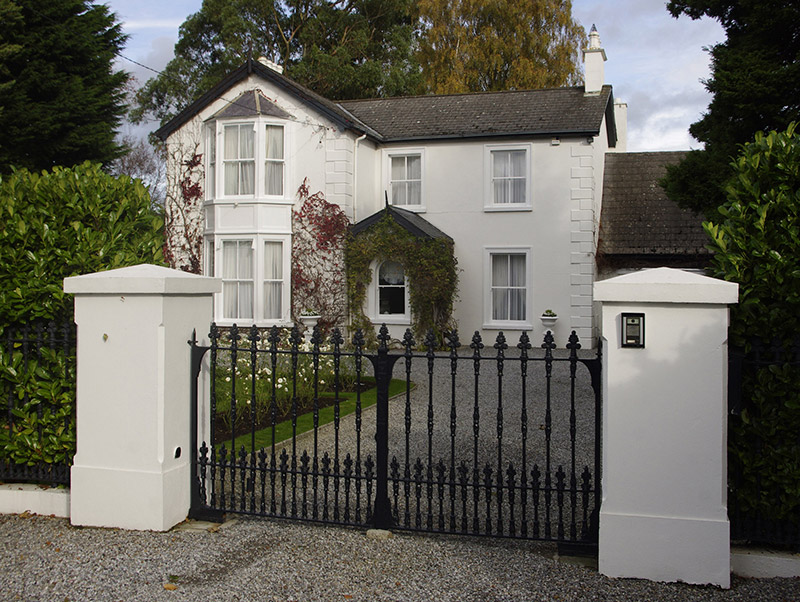Survey Data
Reg No
60230020
Rating
Regional
Categories of Special Interest
Architectural, Artistic
Previous Name
Rocksavage
Original Use
House
In Use As
House
Date
1859 - 1862
Coordinates
320902, 226234
Date Recorded
23/10/2014
Date Updated
--/--/--
Description
Detached three-bay two-storey house, extant 1862, on an F-shaped plan centred on single-bay single-storey gabled projecting porch to ground floor abutting single-bay full-height gabled projecting end bay; two-bay (west) or single-bay (east) two-storey side elevations. One of a group of six. Replacement pitched fibre-cement slate roof on an L-shaped plan; pitched (gabled) slate roof (porch), clay ridge tiles, rendered chimney stacks having cornice capping supporting terracotta or yellow terracotta octagonal pots, timber bargeboards to gables on timber purlins with timber finials to apexes, and uPVC rainwater goods on box eaves retaining cast-iron downpipes. Part creeper- or ivy-covered rendered, ruled and lined walls with rusticated quoins to corners. Round-headed central window opening (porch) with cut-granite sill, and moulded rendered surround framing one-over-one timber sash window. Square-headed window openings with cut-granite sills, and moulded rendered surrounds framing two-over-two timber sash windows. Set in landscaped grounds.
Appraisal
A house erected as one of a group of six houses (including 60230021 - 60230025) representing an integral component of the mid nineteenth-century domestic built heritage of south County Dublin with the architectural value of the composition, possibly one of the houses attributed to 'Mr. Taylor [who] has been speculating in erecting for subsequent sale houses rather more ambitious in their external design than meritorious' (The Dublin Builder 1st June 1862, 140), suggested by such attributes as the compact plan form centred on an expressed porch; the diminishing in scale of the openings on each floor producing a graduated visual impression with the principal "apartments" defined by polygonal bay windows; and the restrained timber work embellishing the roofline. Having been well maintained, the elementary form and massing survive intact together with substantial quantities of the original fabric, both to the exterior and to the interior, thus upholding the character or integrity of a house forming part of a self-contained ensemble making a pleasing visual statement in a sylvan street scene.

